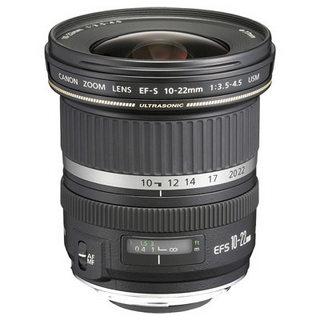While you have purchased a DSLR camera and understood the very basics of photography, it’s time now to get familiar with various types of lenses available for your DSLR camera. While a “lens” might sound just normal in photography, one thing you must know is that using a suitable, good-quality lens will really change the way you click pictures. While there are a number of different lenses available in the market, your ability to pick up the right lens will decide the results.
There are 2 primary fundamentals to be considered while purchasing a lens: Focal length and Sensor Size.
FOCAL LENGTH
Focal length is defined as a measurement of the distance between the sensor and the optical center of the lens. The choice of the appropriate focal length depends upon what you are shooting, or in other words, the subject you are shooting. 
Every lens is described by the measure of its focal length which is usually measured in mm (millimetre).
- A short focal length lets you to stand closer to the subject such that it could entirely fill the frame and the objects in the background appear more distant than they actually are. Some of the commonly used short focal lengths are 15mm, 20mm and 35mm.
- A long focal length supports you to stand far off from the subject such that it can entirely fill the frame, but the objects in the background appear closer than they actually are. Some commonly used long focal lengths are 85mm, 105mm and 300mm.
The focal length range is printed on the lens, you can see 12, 15, 18, 20 and 24 in the picture below.
SENSOR SIZE
The size of a camera’s sensor determines the amount of light it can use to create a picture. It’s therefore quite clear that a bigger sensor is accustomed to capture more detail than a smaller one.
Most of the entry-level DSLR cameras come with sensors smaller than full-frame sensors since they are quite easy and economical to be manufactured. Bigger sized sensors require big and heavy lenses.
There are some expensive DSLR cameras which are equipped with a 'full-frame' sensor, like Canon's 1Ds/5D and Nikon D3 series.
TYPES OF LENSES
1. Wide Angle lenses
These lenses allow you to fit multiple things into an image. These are good for capturing landscapes and large groups of people. Wide Angle Lenses are often used in documentary photography in which you’re likely to bring a lot of foreground and background to the picture.Some commonly used Wide Angle Lenses are 24mm and 35 mm.
 Canon’s EF-S 10-22mm f3.5/4.5 USM Lens is one of the top Wide Angle Lenses in the market.
Canon’s EF-S 10-22mm f3.5/4.5 USM Lens is one of the top Wide Angle Lenses in the market.
2. Standard Lenses
These lenses have a focal length of the range of 35-70mm. The angle of view of these cameras is in proportion to that of a human eye. This means that they generate images which seem natural to a viewer. These lenses are meant for general use in travel and street photography in which the photographer needs to be quick in his/her movement in order to capture an interesting moment. The most commonly used standard lens is a fixed 50mm lens.
 Nikon’s 50mm f/1.8D is one of the popular standard lenses made till date.
Nikon’s 50mm f/1.8D is one of the popular standard lenses made till date.
3. Telephoto Lenses
These lenses have a longer focal length, generally between 135mm and 300mm, and are accustomed to offer a higher level of magnification. This makes it clear that these lenses are preferably used in capturing far off objects. These lenses are generally bigger and heavier than other lenses.
These lenses are primarily used in wildlife and sports photography wherein it’s difficult for the photographer to get nearer to the subject.
 One famous variant is Nikon’s AF-S 70-300mm f/4.5-5.6G ED VR.
One famous variant is Nikon’s AF-S 70-300mm f/4.5-5.6G ED VR.
4. Macro lenses
These lenses have a varying focal length, generally in the range of 50 mm to 200 mm and have the ability to focus closer to an object as compared to normal lenses. They’re capable in providing a significantly larger level of magnification. They are primarily used in flower and insect photography.
 Canon’s EF 100mm f/2.8 USM Macro is one of the most preferable macro lenses.
Canon’s EF 100mm f/2.8 USM Macro is one of the most preferable macro lenses.
5. Zoom Lenses
These lenses are generally provided with DSLRs. The focal length range is provided as minimum and maximum values like 14-24 mm, 18-55 mm and 70-200 mm which the photographer can choose by twisting the barrel of the lens. Such a lens provides a lot of convenience to the photographer in taking good pictures with both wide and longer focal lengths, without having to carry and change between multiple lenses.
6. Prime Lenses
These lenses have a fixed focal length, commonly 50mm, 35mm, 85mm and 300mm. The usage of these lenses isn’t as convenient as that of the zoom lenses, but the quality of output image is higher. They have large apertures, like f2.8, f1.8, f1.4 and f1.2 which make them preferable for indoor and low light photography. Because of a simpler construction, these lenses are less expensive when compared to the zoom lenses.
 One famous prime lens is Canon’s EF 50mm f/1.4 USM.
One famous prime lens is Canon’s EF 50mm f/1.4 USM.
Photography isn't as generic as it sounds. Napoleon's quote "A picture is worth a thousand words" quite explains it. For a beginner, there is always a lot to explore with photography. The role and importance lenses in photography cannot be overlooked. Thus, every photographer must have essential knowledge of the available lenses in the market, before he/she buys a lens for their DSLR camera.
Interested in Learning How to Use a DSLR?





